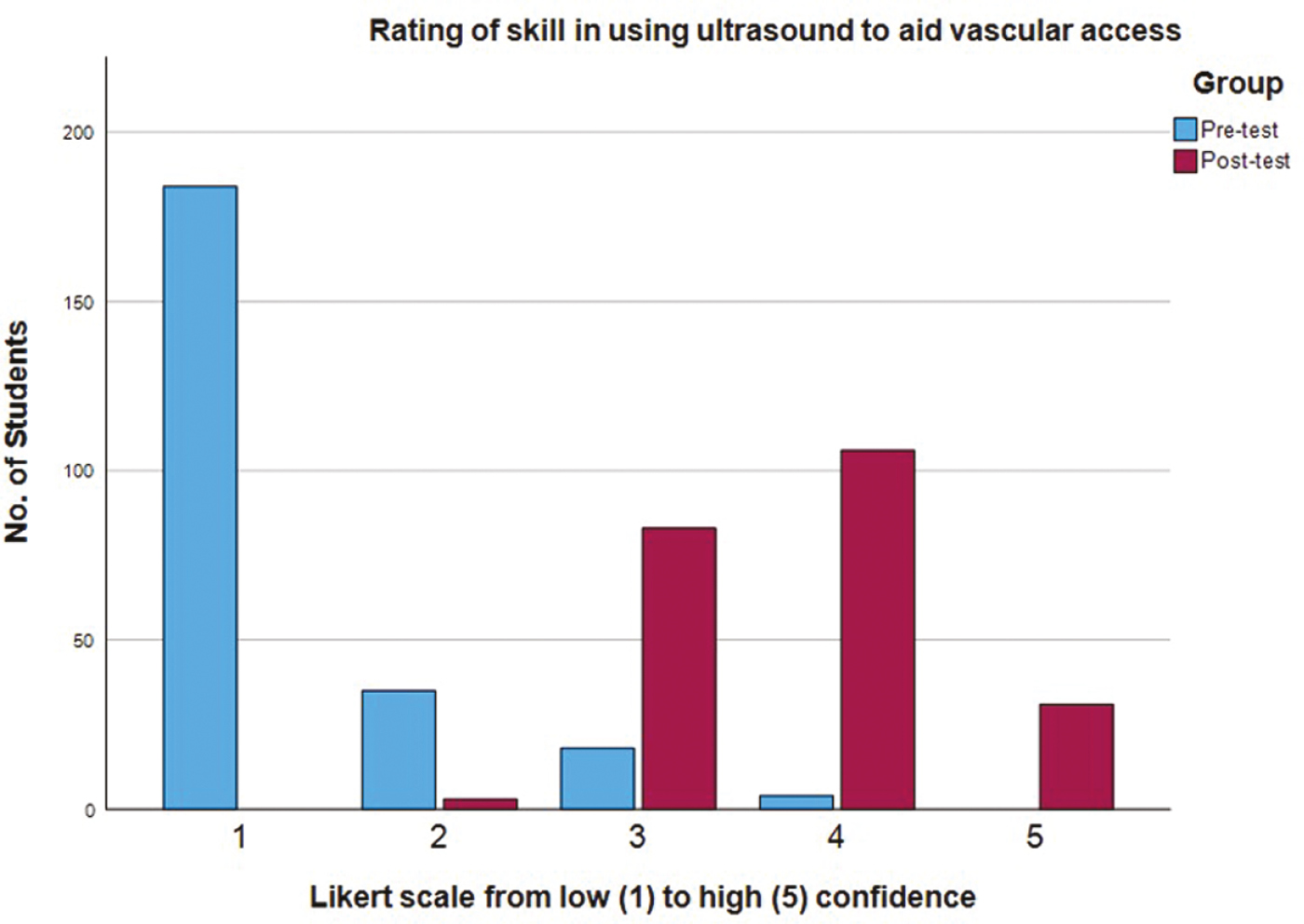
The number of patients posing challenges to conventional peripheral venous cannulation techniques is ever increasing with rising rates of obesity, chronic illness and long-term IV therapies including chemotherapy [1]. The use of Ultrasound Guided Venous Cannulation (USGVC) has enabled venous cannulation to be carried out at the bedside by a wide range of professionals [2]. Teaching this skill was originally a postgraduate proficiency, often specific to certain specialities such as anaesthesia and intensive care. Increasingly this technique is being taught to doctors earlier in their careers and indeed at undergraduate level [1,2]. Our aim was to assess the effects of a teaching session on final year medical students.
Students attended a 90-minute teaching session including a 30-minute lecture covering the basics of medical ultrasonography, anatomy of the upper limb and a video demonstration of USGVC, followed by a small group practical session lasting 60 minutes. During the practical session they were shown the principles of ultrasound machine controls, identifying arteries and veins on human volunteers and USGVC on a phantom limb. All students had the opportunity to practice these skills during the session with guidance from faculty. Self-reported confidence, knowledge and skills in USGVC were assessed Pre and Post teaching session via electronic questionnaires.
Questionnaires were returned by 241 students across two teaching sessions in November 2023 and January 2024. Pre teaching session Median values (IQ range) were: confidence 1(1-2), knowledge 2(2-3) and skill 1(1-1). Post session Median scores were 4(3-4) for confidence, 4(4-5) for knowledge and 4(3-4) for perceived skill showing a statistically significant self-reported improvement following the 90-minute teaching session (p<0.001 Independent-Samples Median T Test SPPS V29). Figure 1-A83 shows a comparison of self-reported skill levels pre and post teaching session.


We have shown a statistically significant increase in students’ confidence, knowledge and perceived skill in USGVC. We suggest introducing USGVC to undergraduate education would provide a platform for practice and clinical skill acquisition during the remaining undergraduate phase and moving on into their Foundation training. The likely outcome is not only an increased confidence in USGVC amongst clinicians earlier in training, but also increased competence. Once USGVC training is embedded in undergraduate and early post-graduate curricula, this would be an important area of research.
Authors confirm that all relevant ethical standards for research conduct and dissemination have been met. The submitting author confirms that relevant ethical approval was granted, if applicable.
1. McMenamin L, Brown FE, Arora M, Barnard J, Smith LE, Stockell DJ, Tung P, Wakefield RJ, Weerasinghe A, Wolstenhulme S. Twelve tips for integrating ultrasound guided peripheral intravenous access clinical skills teaching into undergraduate medical education. Medical Teacher 2021;43(9):1010–1018.
2. Breslin R, Collins K, Cupitt J. The use of ultrasound as an adjunct to peripheral venous cannulation by junior doctors in clinical practice. Medical Teacher. 2018;40(12):1275–1280.